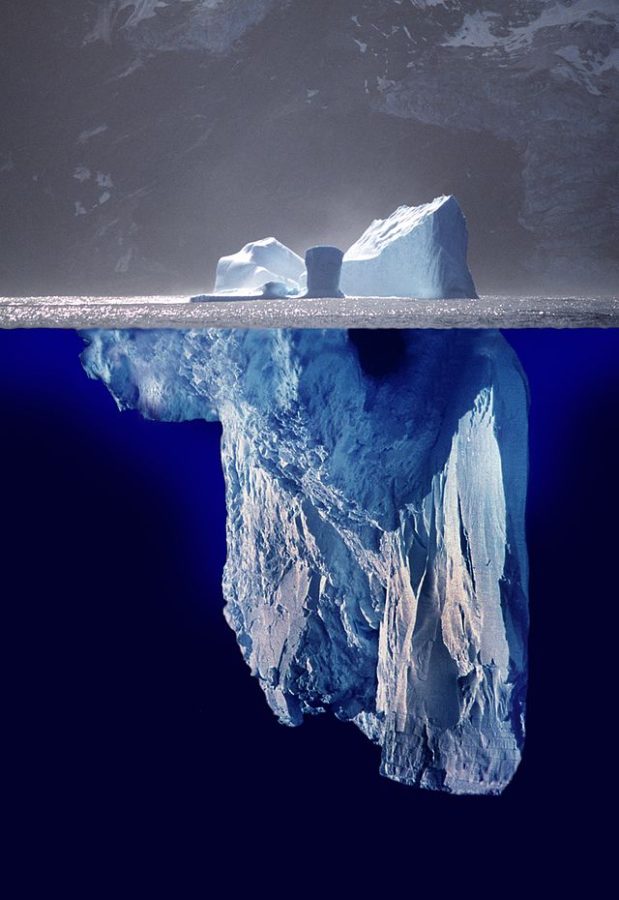Iceberg the size of London breaks off of Antarctica
An Iceburg nearly the size of London is broken off by natural causes.
January 3, 2023
On Jan. 23, an iceberg measuring 600 square miles broke off of The Brunt Ice Shelf in Antarctica, equaling nearly the size of London. This iceberg is 150m thick, and two major cracks have been noticed in the iceberg for the past two years. According to scientists, this was not caused by climate change, but simply by natural causes.
This is one of the biggest icebergs to break off of Antarctica and has caused a lot of discussion. Thankfully, the iceberg will not cause any major damage to the world. Before this, the biggest iceberg was 1668 square miles, which is about the size of Rhode Island. This occurred in March of 2021, just under a year before this iceberg broke off. These recent break-offs cause many to be concerned about what icebergs may look like in the future.
BAS Halley Research Station, has been researching this iceberg since the break off. The station is located on the Ice shelf where the iceberg broke off, and is not in harm’s way after the incident. The break off has been expected for years, and they’ve been well prepared to stay safe. BAS Halley station provides continual information, to provide us the necessary details to understand the significance of the break off.
Professor Dominic Hogsdon at BAS said, “Our science and operational teams continue to monitor the ice shelf in real-time to ensure it is safe, and to maintain the delivery of the science we undertake at Halley.”
While climate change was not the reason for the break off, warm temperatures have been detected in Antarctica.
“Low sea ice has been due in part to a large band of warmer-than-normal air temperatures, which climbed to two degrees Celsius above average over the Ross Sea,” Researchers at the Halley Station said.
Higher sea levels occur when icebergs and shelves are on the loose. Sea ice extent has been lowered as the sea level rises, but continues to not cause much harm. Antarctica ice shelves have experienced a lot of changes, and much of the data continues to change rapidly.
As of right now, the iceberg continues to be monitored, and has caused no damage, and is not expected to in the future. More changes are expected in the future of Antarctica, and the BAS Halley research station, and other research stations are continually involved in the data.

![Prom king Colin Napier and queen Leah Hopkins dance the night away during the Golden Gala on April 26th. Prior to the prom, the Student Government must make many preparations over the course of months in order to ensure it goes off without a hitch. However, their work eventually pays off when it comes time for the dance. “We set up [the prom] the day before, and it’s horrible. We’re there for a very long time, and then we get our beauty sleep, and then we get ready for prom the next day,” Aubrie Sandifer said.](https://oviedojournalism.com/wp-content/uploads/2025/05/Oviedo-197-800x1200.jpg)






![Hopkins at Honor Grad with golf coach John McKernan. As Hopkins’ golf coach for the last two years he has seen Hopkins’ growth as a player and person along with their contributions to the team. “[Hopkins] has just been really helpful since I took [the golf team] over, just anything I wanted to do I ran by [Hopkins],” said McKernan.](https://oviedojournalism.com/wp-content/uploads/2025/05/B66A7760-800x1200.jpg)
































mia • Mar 9, 2023 at 8:42 PM
Its really sad to see how humans are destroying something so beautiful. I like how this article brings awareness to the issues happening in Antartica. Also, how it brings up global warming. Its upsetting to see how many animals are, or will be harmed because of climate change.
mia • Mar 9, 2023 at 8:37 PM
I honestly didn’t realize an iceberg could be that big. Its upsetting to hear about how Antartica is falling apart because of a mess we made. A great amount of animals are suffering because of it. I like how this article is also informing us of the effects of climate change
jacob • Mar 7, 2023 at 2:12 PM
That’s really interesting I didn’t even realize there are icebergs that big. I also like how it bring up the fact of global warming and how it is changing our environment. I’m glad that it did not cause harm. I feel like the government should take this more seriously.
Jacob • Mar 7, 2023 at 2:05 PM
It is really sad how climate change is destroying the Antarctica and affecting millions of life’s around the globe. I like how it bring up the fact of global warming and how it is changing our environment. It’s so sad to see icebergs breaking off and sea levels rising from global warming. But its good news to see that it caused no harm. I liked the way you made the article interesting and informative.
alyssa • Mar 7, 2023 at 2:04 PM
I really liked this article and It’s so sad to see icebergs breaking off. This is all caused by global warming and sea levels rising due to it. I wish the Government would do more against climate change. The article itself was really good and informative.
Lindsay Korman • Mar 6, 2023 at 1:56 PM
That’s really interesting I didn’t even realize there are icebergs that big. I also like how it bring up the fact of global warming and how it is changing our environment. I also liked that the article was just informing us about global warming and why we should worry about it
Adam • Mar 3, 2023 at 1:56 PM
I really liked this article since I am interested in the topic of global warming. It’s so sad to see icebergs breaking off and sea levels rising from global warming. But its good news to see that it caused no harm. I liked the way you made the article interesting. Like if people aren’t interested in global warming they would read it because its good
Ishani Chanda • Mar 3, 2023 at 1:52 PM
Global Warming gets worse day by day, and this article recognizes major events that are advancing it. I like that this article was full of facts, not propaganda. Hopefully this article makes people more aware of what kind of damage is happening to Earth. All in all, this is a cool but sad article about our reality.
Tim-Luca Kellner • Mar 3, 2023 at 1:49 PM
It is really sad how climate change is destroying the Antarctica and affecting millions of life’s around the globe. I wish the Government would do more against climate change. The article itself was really good and informative. Good quotes have been used. I enjoyed reading it.